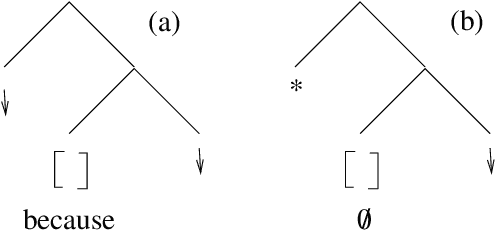Bonnie Lynn Webber
University of Pennsylvania
Anchoring a Lexicalized Tree-Adjoining Grammar for Discourse
Jun 24, 1998



Abstract:We here explore a ``fully'' lexicalized Tree-Adjoining Grammar for discourse that takes the basic elements of a (monologic) discourse to be not simply clauses, but larger structures that are anchored on variously realized discourse cues. This link with intra-sentential grammar suggests an account for different patterns of discourse cues, while the different structures and operations suggest three separate sources for elements of discourse meaning: (1) a compositional semantics tied to the basic trees and operations; (2) a presuppositional semantics carried by cue phrases that freely adjoin to trees; and (3) general inference, that draws additional, defeasible conclusions that flesh out what is conveyed compositionally.
* 7 pages, uses aclcol.sty
Expectations in Incremental Discourse Processing
Aug 05, 1997
Abstract:The way in which discourse features express connections back to the previous discourse has been described in the literature in terms of adjoining at the right frontier of discourse structure. But this does not allow for discourse features that express expectations about what is to come in the subsequent discourse. After characterizing these expectations and their distribution in text, we show how an approach that makes use of substitution as well as adjoining on a suitably defined right frontier, can be used to both process expectations and constrain discouse processing in general.
* 9 pages, uses aclap.sty, psfig.tex
 Add to Chrome
Add to Chrome Add to Firefox
Add to Firefox Add to Edge
Add to Edge